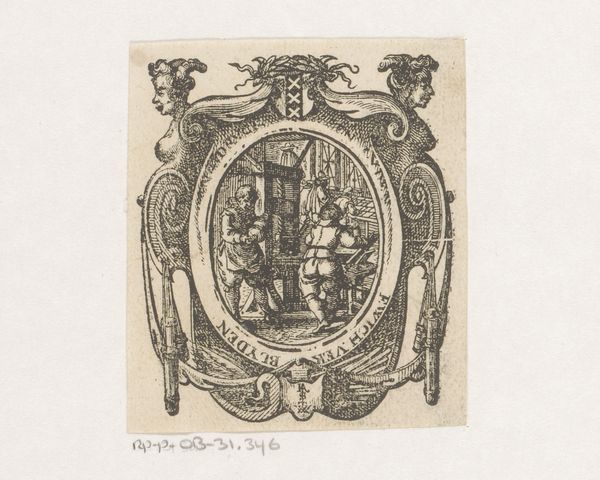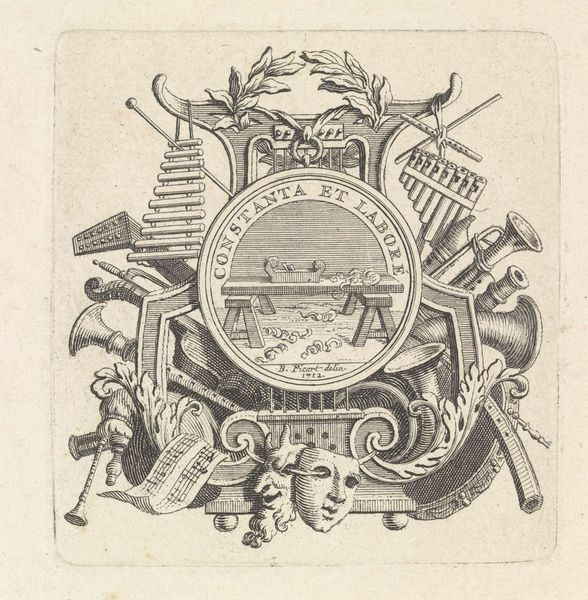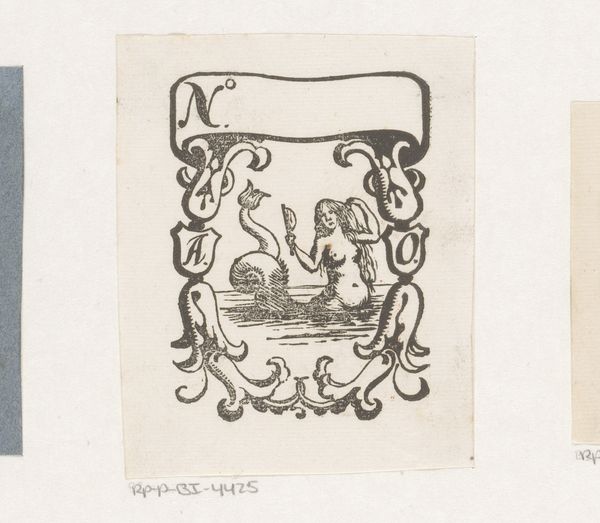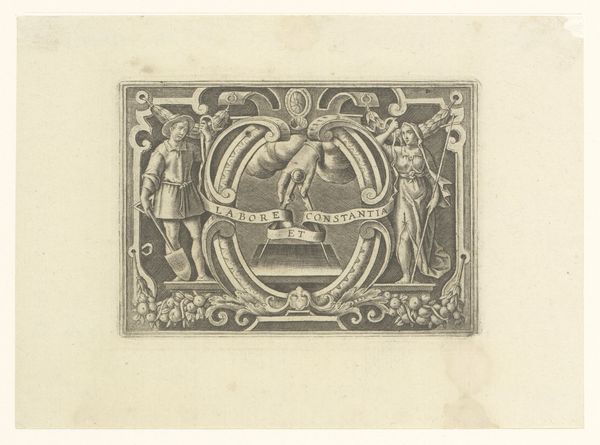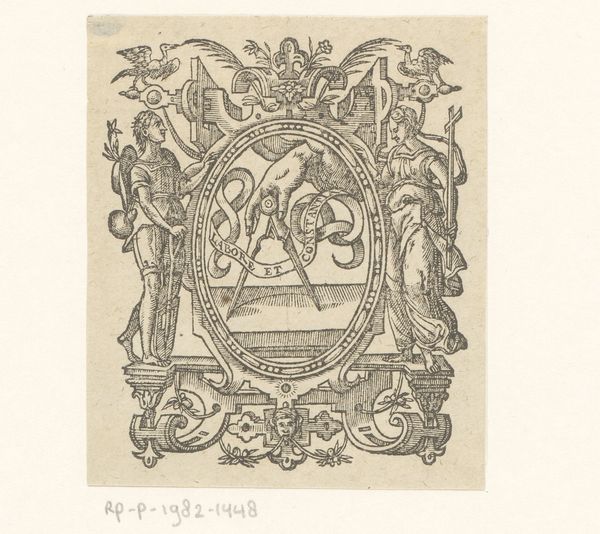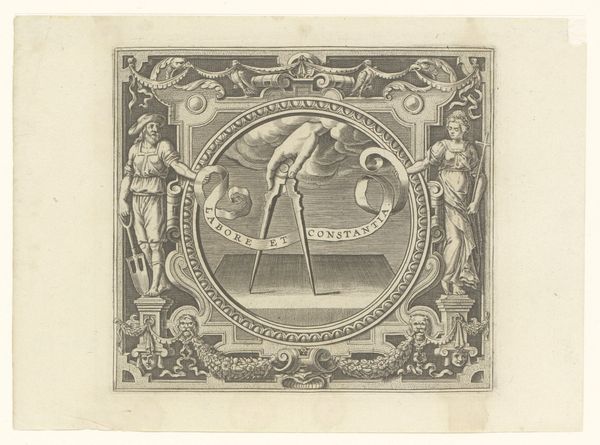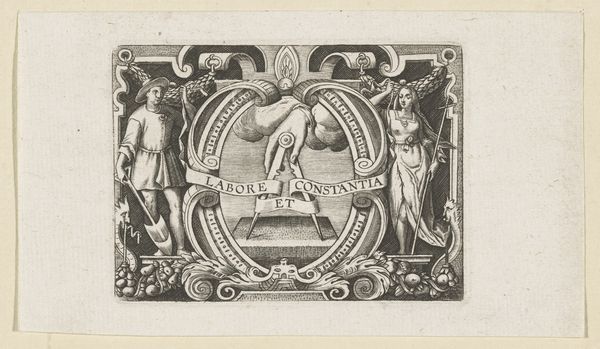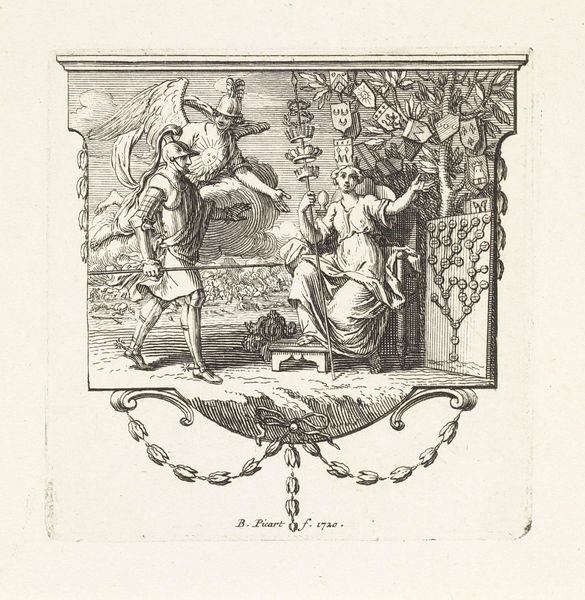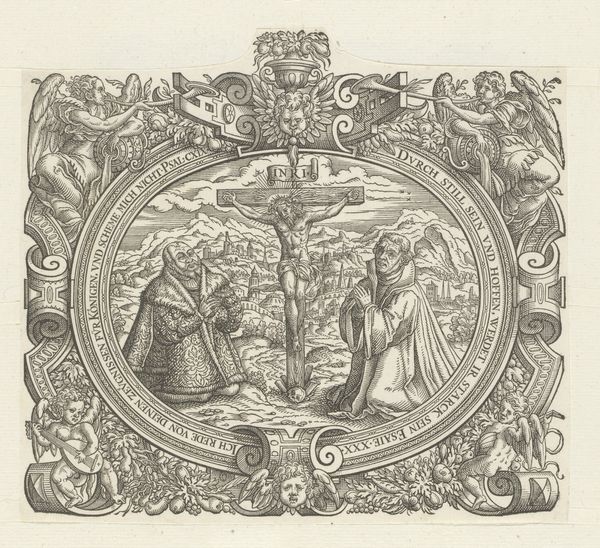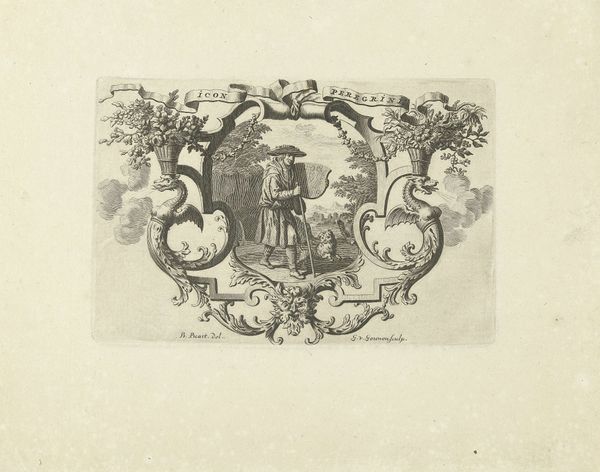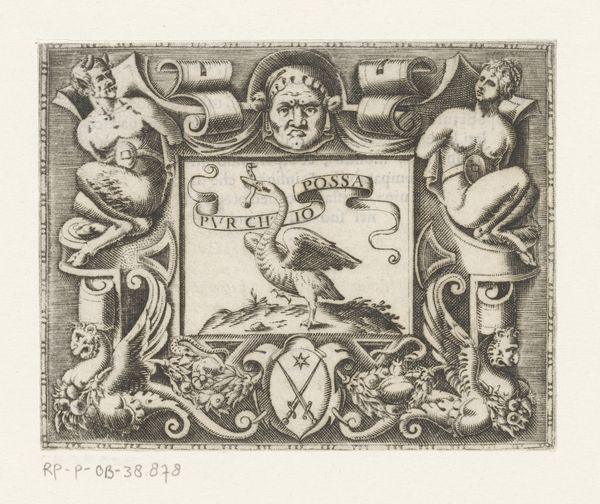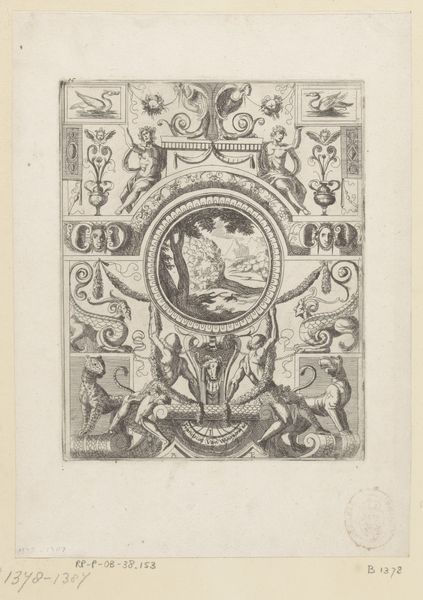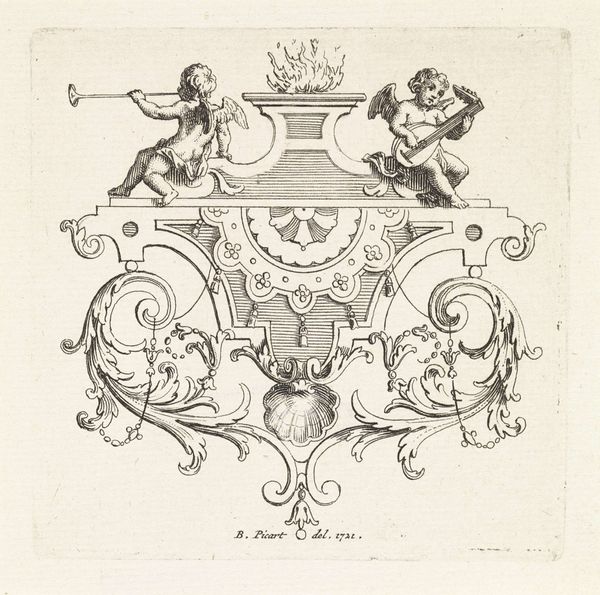
Dimensions: height 93 mm, width 78 mm
Copyright: Rijks Museum: Open Domain
Curator: This intriguing print is identified as the "Drukkersmerk van Plantijn," dating from around 1561 to 1620. It’s currently held in the Rijksmuseum collection. Editor: My first thought? It feels meticulously constructed, yet a little…austere. All those clean lines. It definitely has an air of scholarly pursuit about it. Curator: The print is a fascinating window into the social and institutional history of the printing trade. Christopher Plantin was, of course, a pivotal figure, and this emblem served as his company's brand, a public symbol of its quality and values. We see here the symbolic representation of the printing trade. The pair of compasses evokes precision, skill and artistry. Editor: Right, the compass, the intellectual’s square… It’s all so deliberate. I can’t help but see the embedded gender politics at play in this controlled, rational presentation. This pursuit of 'truth' often had distinctly masculine connotations, and the knowledge and printing trades certainly weren't spaces equally accessible to women. We must recognize, however, that his contributions significantly broadened literacy at all social levels. Curator: The imagery certainly projects an aura of authority. Consider also how the choice of engraving—a meticulous and labor-intensive medium—further underscores Plantin's commitment to excellence, contributing to a public image of high quality printing for his company and brand. It's all part of how art creates and maintains institutional power, even in what seems a fairly simple piece. Editor: Exactly. But unpacking it further, even seemingly simple choices about symbols are tied up with broader socio-political narratives around knowledge, power, and accessibility. Examining historical works helps illuminate present day systemic inequality that can sometimes fly beneath the radar. Curator: A perfect point to conclude on. It reminds us that even ostensibly straightforward historical prints like this one, prompt a deep exploration of the complexities that inform our visual world. Editor: Precisely, it shows us how to reveal, in a new and inclusive way, the multiple levels of reading even the "simplest" works, as ways to approach the current day’s struggles.
Comments
No comments
Be the first to comment and join the conversation on the ultimate creative platform.
